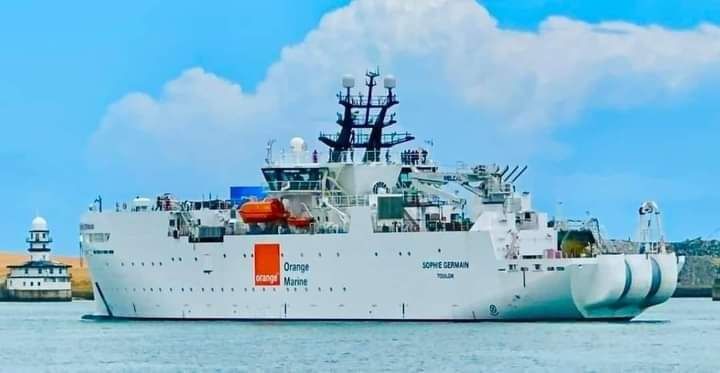Orange Marine to Repair Damaged Cables
————————————————
If all things go according to plan, full internet would be restored to the affected African countries by third week in April, this is according to the National Communications Authority (NCA) of Ghana.
The NCA said that after meeting with the four subsea cables’ landing service providers and mobile operators, who provided the regulator with the estimated repair time.

Efforts towards finding solutions to the problem received a major boost over the weekend as Orange Marine, a subsidiary of Orange Telecoms confirmed it would lead the repair process with other telecoms engineering firms. It is expected that Orange would deploy its newly acquired state of the art cable ship Sophie Germain for the operations.
The Sophie Germain is a 100 metres long ship that is equipped with an underwater robot that can dive down 3,000 metres and lift a damaged cable to the surface to be fixed. The state-of-the-art 450 kW ROV (Remotely Operated Vehicle) can also cut, inspect and bury the sealed cable in a trench in the ocean floor.
The whole process can take about three days so full repair depends on how many points for repair on each of the three major cables.
According to Orange, the new cable has minimal environmental footprint that is fully equipped to meet growing global connectivity needs. A ship position tracking I did this morning show that Sophie Germain is heading to Toloun France.
MainOne earlier suspected that the damage may have been caused by tectonic activities on the seabed because the area the damage happened is impossible to be accessed by human activities.
However, the United States Geological Survey said it did not detect any earthquakes in the vicinity of the cable breaks last week, even though that does not rule out other possible earth related activity on the seabed.
The new ship is named Sophie Germain (1776-1831), one of Europe’s most outstanding female Mathematicians and Physicists. Described as coming ahead of her time, Sophie was prevented from pursuing her chosen path in Mathematics because of her gender.
She was also prevented from attending the newly established Paris Polytechnic because she was a girl, so she adopted a pseudonym M. Leblanc through which she wrote her papers which won awards.
She is one of the pioneers of elasticity theory; she won the grand prize from the Paris Academy of Sciences for her essay on the subject. Her work on Fermat’s Last Theorem provided a foundation for mathematicians exploring the subject for hundreds of years after.



